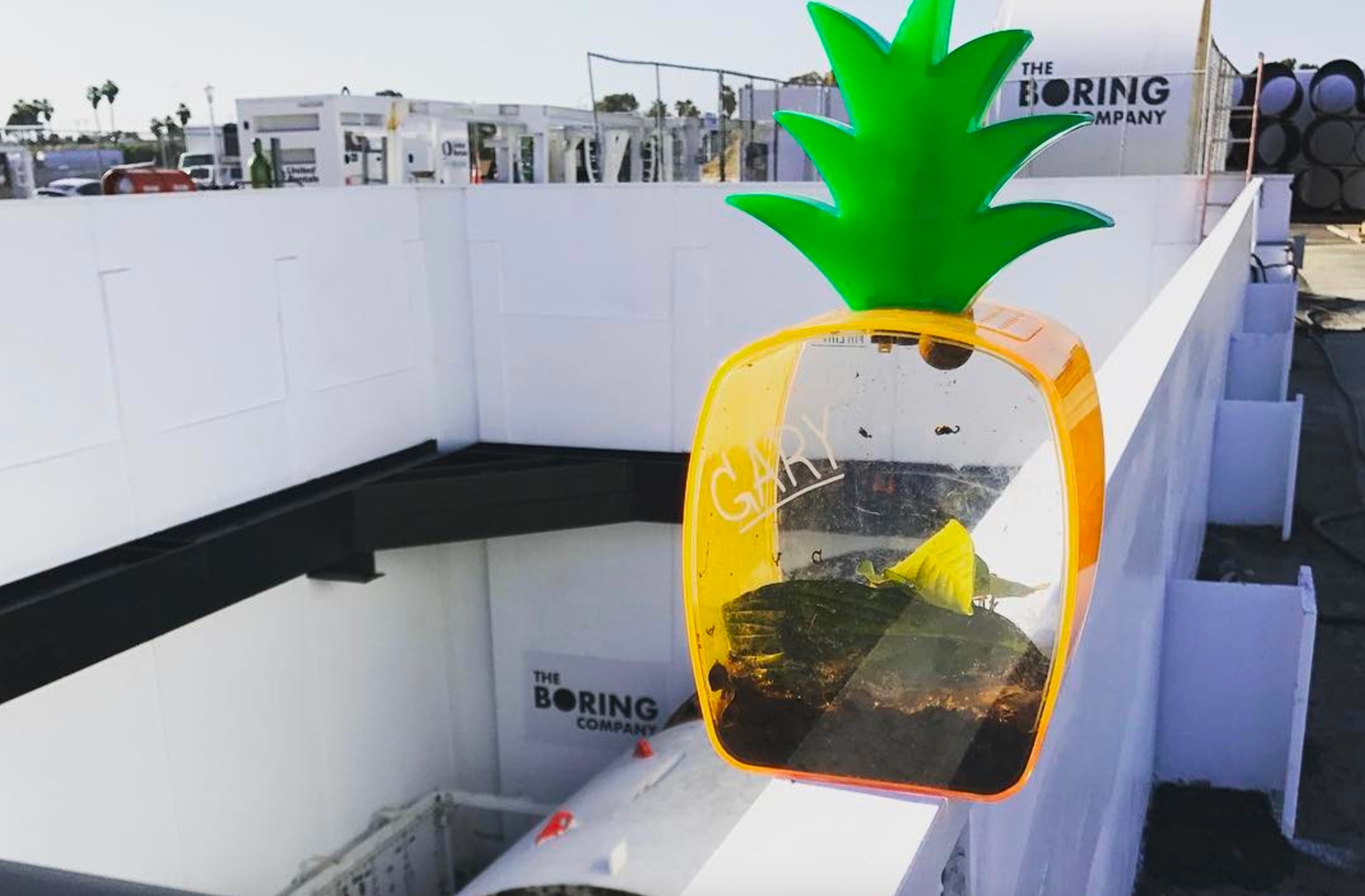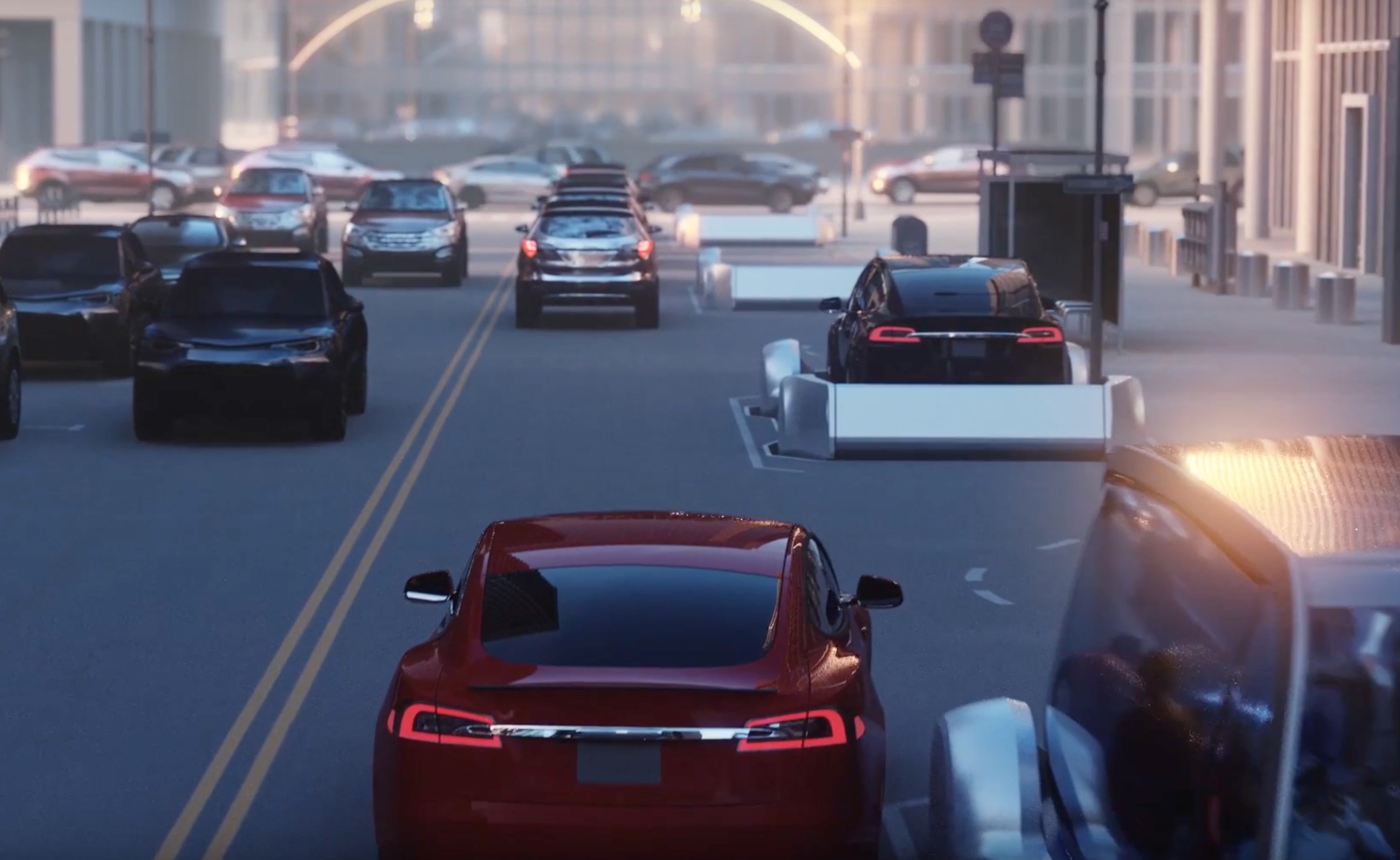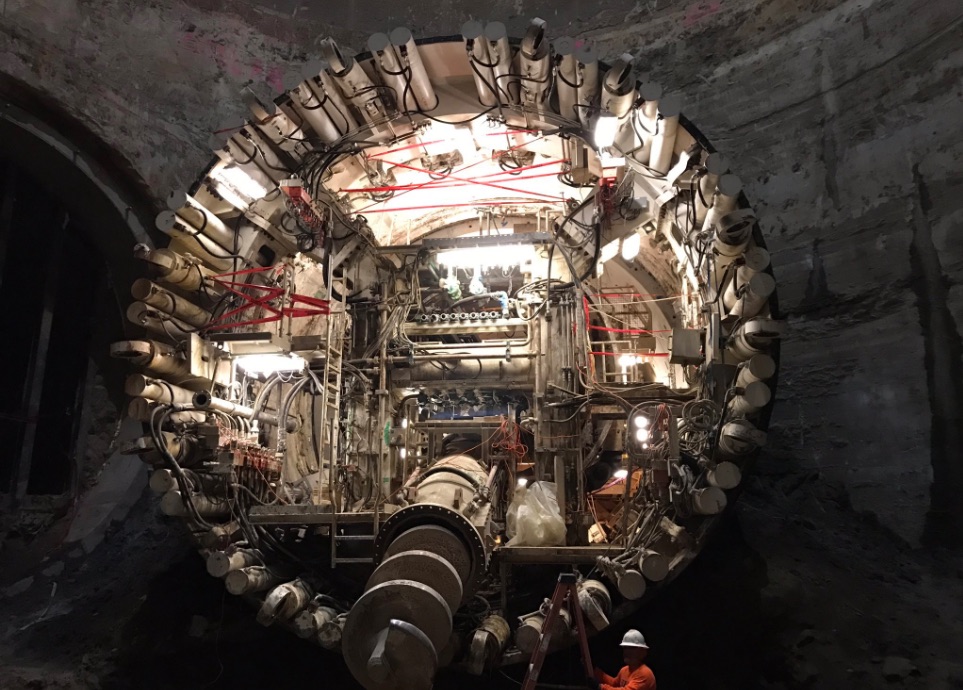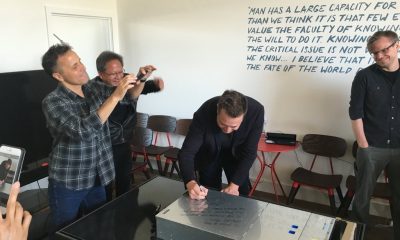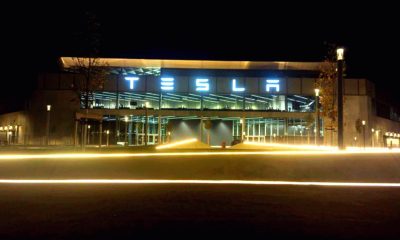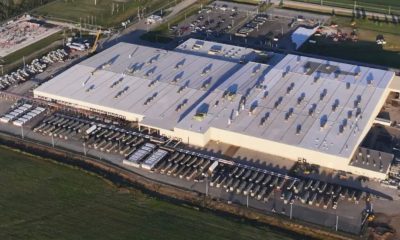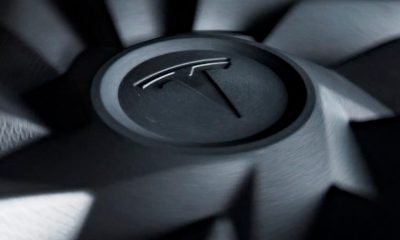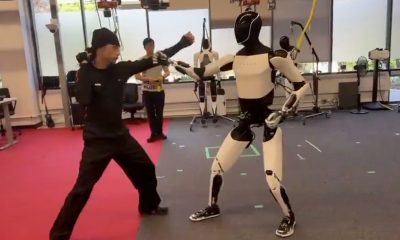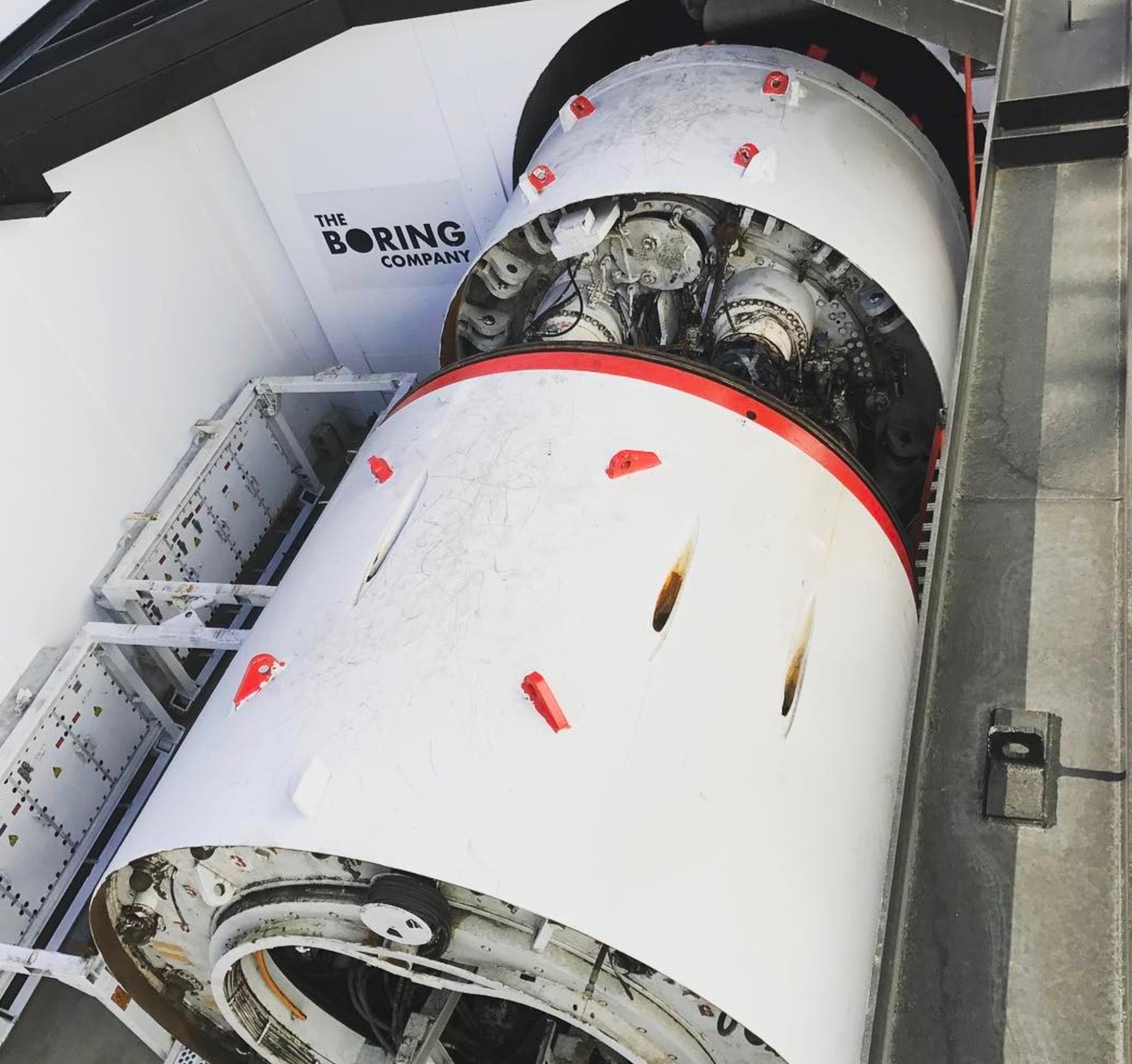
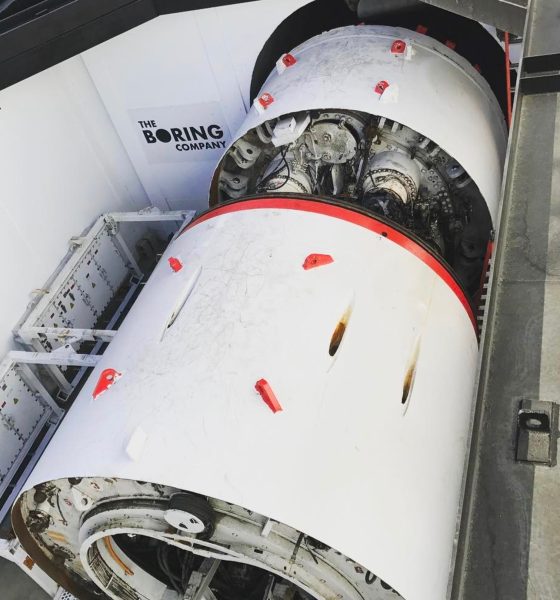
News
Musk’s Boring Co reveals plan to support Hyperloop in published FAQ
Elon Musk’s plan to integrate Tesla electric sleds traveling through underground tunnels dug by The Boring Company will also include support for vacuum-sealed tunnels used by 600+ mph Hyperloop Pods.
The reveal comes from the company’s newly published Frequently Asked Questions page that does away with introductions and cuts straight to the chase.
“A large network of road tunnels many levels deep would fix congestion in any city, no matter how large it grew (just keep adding levels). The key to making this work is increasing tunneling speed and dropping costs by a factor of 10 or more – this is the goal of The Boring Company. Fast to dig, low cost tunnels would also make Hyperloop adoption viable and enable rapid transit across densely populated regions, enabling travel from New York to Washington DC in less than 30 minutes.” reads the FAQ.
The company isn’t even traveling at a snail’s pace, yet it has big plans to do just that – dig tunnels faster than a snail travels. In this case, resident snail Gary (who lives in a pineapple under the sea) can move at 14 times the speed of a Tunnel Boring Machine (TBM) and represents the target speed for the company’s boring machines.
The Framework for Hyperloop
The FAQ sheet broke news that Musk and the team at The Boring Company, in cooperation with Tesla, are planning to build tunnels that can support multi-payloads including that of a Hyperloop Pod. In addition to enabling travel and transport at much higher speeds, this addition is likely to set the Tesla electric sled platform as the standard track that will be used to support mobility of the Hyperloop Pod.
Certain segments of the underground tunnels will have a vacuum shell, if not the entire track, that will allow the tunnel to be held at vacuum. Long distance travel would likely be performed in tunnels held at vacuum, enabling for higher speeds of travel. This format of local versus long distance is the same used by train systems in Europe that have different trains and tracks depending on train speed and distance of travel.
Converts Internal Combustion Vehicles into EVs
Another upside of the system is that it enables the conversion of internal combustion vehicles into zero emission vehicles. When a traditional petroleum powered vehicle is moved onto an electric sled, it will be moved through a system that emits zero emissions. This eliminates the emissions these vehicles would have emitted if they would had ordinarily travelled by road to their destination.
Many people will take Hyperloop Pods to their destinations due to the lower cost of travel. Logistics companies will also shift payload transportation to the tunnel system due to the lower cost as a result of not having a driver, higher speed and automated control over the load. With all of this traffic moving to the conceptual tunnel-based transportation system, it has the potential to radically slash the amount of transportation related emissions and demand for fossil fuels.
If the petroleum industry wasn’t paying attention to Musk and the impact Tesla may have on automotive related fuel consumption, this announcement is surely the wake up call they needed.
Earthquake!
Hollywood thrillers over the years have cast subway systems as the perfect set for apocalyptic thrillers where only a muscular hero armed with backpack full of lithium ion batteries, a stick of bubblegum and the copper from the wiring for the lights can save the day.
The truth, it turns out, is much different. The FAQs relay the facts that structural engineers have know for ages – that properly designed tunnels are one of the safest places to be during an earthquake. The tunnels is not subject to surface forces and instead of resisting the movement of the earthquake, moves with the ground.
Dirty Business
When tunneling in the Minecraft video game, the tunnel materializes and the blocks smashed with a pickaxe or sword simply disappear or move into inventory. The real world is unfortunately not so simple, but The Boring Company has plans to make it just a bit more like Minecraft.
Two major challenges with traditional tunneling are the massive amount of earth being displaced by the tunnel and the equally as challenging amount of concrete that is required to seal the circumference of the tunnel. To solve these challenges together, The Boring Company hopes to develop a process for using the resulting soil to produce earthen bricks. These bricks could even be used as a component of the tunnel lining itself or simply sold as a product.
This is yet another piece of evidence that Tesla truly is attempting to create Minecraft in the real world, reviving the ancient practice of crafting bricks from dirt.
In addition to turning a liability into an asset, this has the potential to drastically cut the amount of concrete used in the production of the tunnels it is constructing. Because of the sheer mass of concrete and the effort required to extract its components, and ship them to the destination, concrete production accounts for a staggering 4.5% of the world’s greenhouse gas emissions. The Boring Company hopes to take a chunk out of those emissions by using bricks where possible in the construction of its tunnels.
Where The Boring Company will go from here is anyone’s guess but this latest update makes it clear that Musk is never willing to settle for the status quo, and always begins working from the ground up – or in this case, from the ground down – when moving into a new business.
News
Nvidia CEO Jensen Huang regrets not investing more in Elon Musk’s xAI
The CEO stated that Nvidia is already an investor in xAI, but he wished he had given the artificial intelligence startup more money.
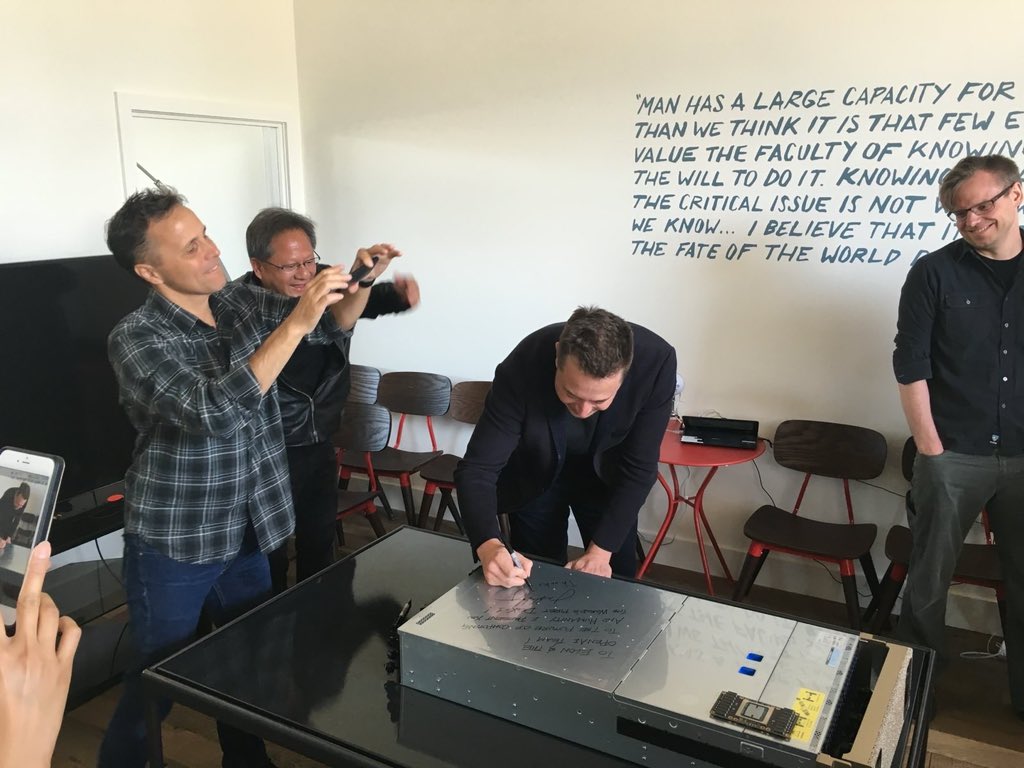
Nvidia CEO Jensen Huang revealed that one of his investment regrets is not putting more money into Elon Musk’s artificial intelligence startup, xAI.
Speaking in a CNBC interview, Huang said Nvidia is already an investor in xAI but wished he had given the artificial intelligence startup more money. This was due to Musk’s record of building transformative companies such as Tesla and SpaceX.
A new wave of transformative AI firms
Huang said he’s very excited about xAI’s latest financing round. He described Musk’s company as part of a powerful new generation of AI developers, alongside OpenAI and Anthropic. that are reshaping the computing landscape.
“I’m super excited about the financing opportunity they’re doing. The only regret I have about xAI, we’re an investor already, is that I didn’t give him more money. You know almost everything that Elon’s pat of, you really want to be part of as well,” the Nvidia CEO stated.
The CEO also clarified Nvidia’s investment in xAI, revealing that Elon Musk had offered the investment opportunity to the chipmaker. “He (Musk) gave us the opportunity to invest in xAI. I’m just delighted by that,” Huang stated.
AI investment boom
Huang contrasted today’s AI-driven economy with the early days of the internet. “Back then, all the internet companies combined were maybe $30 or $40 billion in size,” he said. “If you look at the hyperscalers now, that’s about $2.5 trillion of business already operating today.”
He also stated that the ongoing shift from CPU-based computing to GPU-powered generative AI represents a “multi-trillion-dollar buildout” that Nvidia is looking to support. Huang added that every Nvidia engineer now works with AI coding assistants such as Cursor, which he called his “favorite enterprise AI service,” and it has led to a major productivity boost across the company.
Watch Nvidia CEO Jensen Huang’s CNBC interview in the video below.
Investor's Corner
Stifel raises Tesla price target by 9.8% over FSD, Robotaxi advancements
Stifel also maintained a “Buy” rating for the electric vehicle maker.

Investment firm Stifel has raised its price target for Tesla (NASDAQ:TSLA) shares to $483 from $440 over increased confidence in the company’s self-driving and Robotaxi programs. The new price target suggests an 11.5% upside from Tesla’s closing price on Tuesday.
Stifel also maintained a “Buy” rating despite acknowledging that Tesla’s timeline for fully unsupervised driving may be ambitious.
Building confidence
In a note to clients, Stifel stated that it believes “Tesla is making progress with modest advancements in its Robotaxi network and FSD,” as noted in a report from Investing.com. The firm expects unsupervised FSD to become available for personal use in the U.S. by the end of 2025, with a wider ride-hailing rollout potentially covering half of the U.S. population by year-end.
Stifel also noted that Tesla’s Robotaxi fleet could expand from “tiny to gigantic” within a short time frame, possibly making a material financial impact to the company by late 2026. The firm views Tesla’s vision-based approach to autonomy as central to this long-term growth, suggesting that continued advancements could unlock new revenue streams across both consumer and mobility sectors.
Tesla’s FSD goals still ambitious
While Stifel’s tone remains optimistic, the firm’s analysts acknowledged that Tesla’s aggressive autonomy timeline may face execution challenges. The note described the 2025 unsupervised FSD target as “a stretch,” though still achievable in the medium term.
“We believe Tesla is making progress with modest advancements in its Robotaxi network and FSD. The company has high expectations for its camera-based approach including; 1) Unsupervised FSD to be available for personal use in the United States by year-end 2025, which appears to be a stretch but seems more likely in the medium term; 2) that it will ‘probably have ride hailing in probably half of the populations of the U.S. by the end of the year’,” the firm noted.
News
Tesla Cybertruck’s Full Self-Driving update is ‘coming soon’
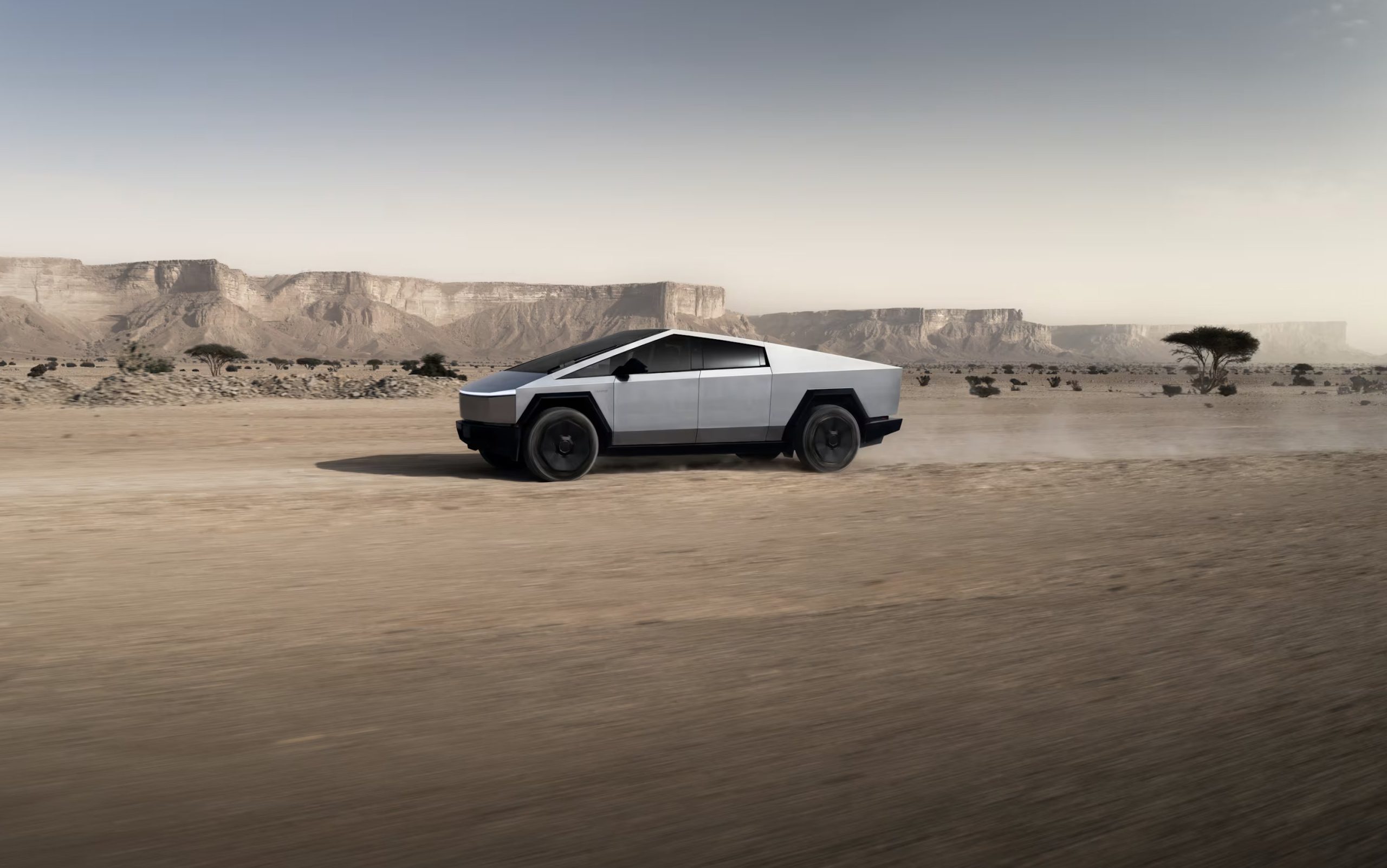
Tesla Cybertruck owners are wondering when they will get access to the company’s Full Self-Driving version 14.1 that rolled out to other owners today for the first time.
Cybertruck owners typically receive Full Self-Driving updates slightly later than other drivers, as the process for the all-electric pickup is different. It is a larger vehicle that requires some additional attention from Tesla before FSD versions are rolled out, so they will be slightly delayed. CEO Elon Musk said the all-wheel steering technically requires a bit more attention before rollout as well.
The all-wheel steering of Cybertruck requires a bit more Autopilot training
— Elon Musk (@elonmusk) October 7, 2025
After some owners got access to the v14.1 Full Self-Driving suite this morning, Cybertruck owners sought out a potential timeframe for when they would be able to experience things for themselves.
Tesla owners show off improvements with new Full Self-Driving v14 rollout
They were able to get an answer from Ashok Elluswamy, Tesla’s Head of AI, who said:
“We got you. Coming soon.”
We got you. Coming soon.
— Ashok Elluswamy (@aelluswamy) October 7, 2025
The release of FSD v14.1 for Cybertruck will not be tempered, either. Elluswamy then confirmed that Tesla would be rolling out the full-featured FSD v14 for the pickup, meaning it would be able to reverse and park itself, among other features.
Elluswamy said it would be capable of these features, which were void in other FSD releases for Cybertruck in the past.
Tesla’s rollout of FSD v14.1 brings several extremely notable changes and improvements to the suite, including more refined operation in parking garages, a new ability to choose parking preferences upon arriving at your destination, a new driving mode called “Sloth,” which is even more reserved than “Chill,” and general operational improvements.
Those who were lucky enough to receive the suite have already started showing off the improvements, and they definitely seem to be a step up from what v13’s more recent versions were capable of.
CEO Elon Musk called v14 “sentient” a few weeks back, and it seems that it is moving toward that. However, he did state that additional releases with more capabilities would be available in the coming weeks, but many owners are still waiting for this first version.
-
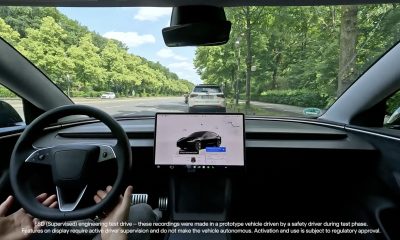
 Elon Musk2 weeks ago
Elon Musk2 weeks agoTesla FSD V14 set for early wide release next week: Elon Musk
-
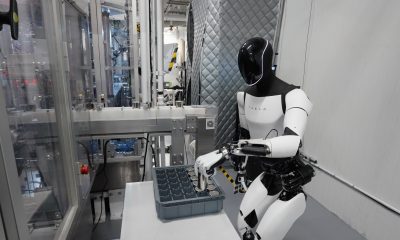
 News2 weeks ago
News2 weeks agoElon Musk gives update on Tesla Optimus progress
-
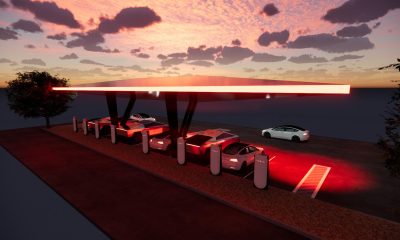
 News2 weeks ago
News2 weeks agoTesla has a new first with its Supercharger network
-
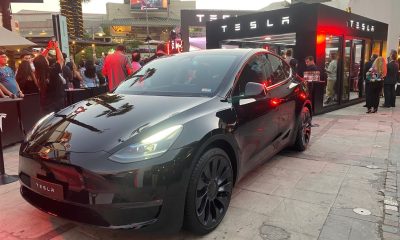
 News2 weeks ago
News2 weeks agoTesla job postings seem to show next surprise market entry
-
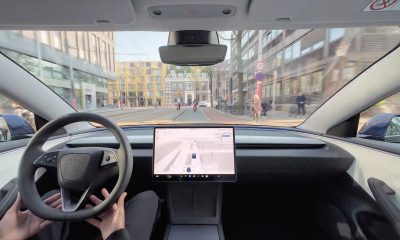
 Investor's Corner2 weeks ago
Investor's Corner2 weeks agoTesla gets new Street-high price target with high hopes for autonomy domination
-
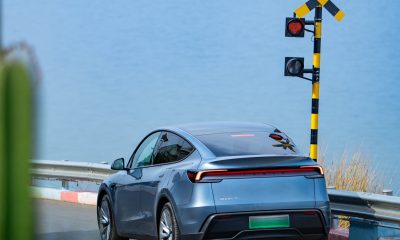
 Lifestyle1 week ago
Lifestyle1 week ago500-mile test proves why Tesla Model Y still humiliates rivals in Europe
-
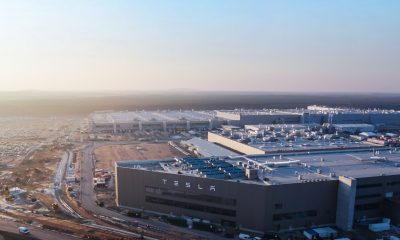
 News1 week ago
News1 week agoTesla Giga Berlin’s water consumption has achieved the unthinkable
-
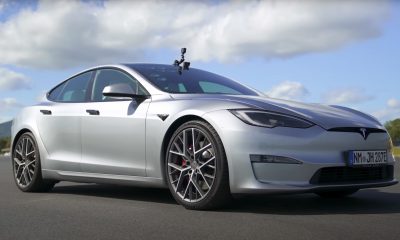
 Lifestyle1 week ago
Lifestyle1 week agoTesla Model S Plaid battles China’s 1500 hp monster Nurburgring monster, with surprising results

